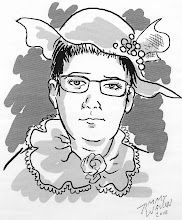The Fire
After taking up the English passengers in Southampton Austria sailed out onto the Atlantic .The journey was relatively uneventful since ther was headwind the ship was estimated to arrive in New York a little later than expected.
At noon on September 13 it was decided to fumigate the sterage, by smoking it by dipping a red hot chain into a bucket of tar. The chain soon became too hot for the boatswain to hold and dropped onto the deck, which immediately caught fire. Soon the cry was heard:
Feuer! (Fire !!)
Although the ship traveled only at half speed, it was impossible to stop the steam engines since enginecrew had become asphyxiated by the smoke.
As the helmsman and the captain abandoned the ship, the ship swung into the wind, which further allowed the fire to spread along the ship, devouring the the mahogany veneer and varnished bulkheads and painted shots. The propeller could not be stopped and the rudder became useless.
Panic broke out on board. The passengers who did not suffocate by the smoke were burned to death by fire or drowned when they jumped overboard to escape the flames. Others died when they were drawn into the rotating propellers.
Anders Victor Lindstein told:
Anders Victor Lindstein told:
The horrible scene at the ship's fire is difficult to describe, you can make yourself an idea about it at the thought that out of 600 people, only 89 became saved. I saw mothers take their children, whose clothes already on fire, and throw them into the sea before plunging themselves into the waves
Charles Rosene and his son Charles Jr. had been sitting near the engineroom when the fire broke out. Charles, Jr. told:
:My father and I ran forward to escape the fire and was followed by the other passengers. I saw the fire penetrate through the valves within 10 to 15 minutes came the call to the lifeboats!
The panic-stricken passengers struggled to get space in a lifeboat, but disarray prevailed
Several lifeboats were launched but . but drove off before anyone had time to rise.
When the firstofficer took a knife and cut the ropes that held one of the lifeboats it fell into the water, the passengers that were inside were thrown out and the boat filled with water Charles Jr. ended up in the water but managed along with some others get into the boat, it however, turned over several times and more people fell out and drowned.
Charles Sr.clinged to the boat for a short while but then lost his grip , and disappeared into the waves. Claes Högqvist clung to one of Austrias lifebuoys for several hours before he could be helped into the lifeboat.
The first vessel to observe the disaster was the French bark Maurice which immediately rushed to help. Att seven in the evening arrived at the burnt ship and could rescue the first survivors.fromthe lifeboat. The next morning the Norwegian sailing ship Catarina picked up the remaining survivors who clung to the charred hull or were floating on wreckage nearby while the charred remains of the burned-out ship was left to sink.
Anders Lindstein was one of the last people pulled alive from the water.., his friend Carl Johan Holmberg was hanging dead on the bowsprit, where he had tied himself. In total, only about 90 people were rescued of the ships originally about 540 occupants.




